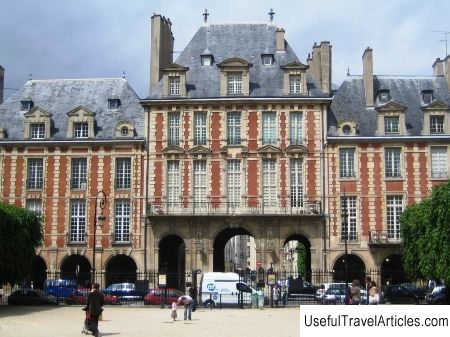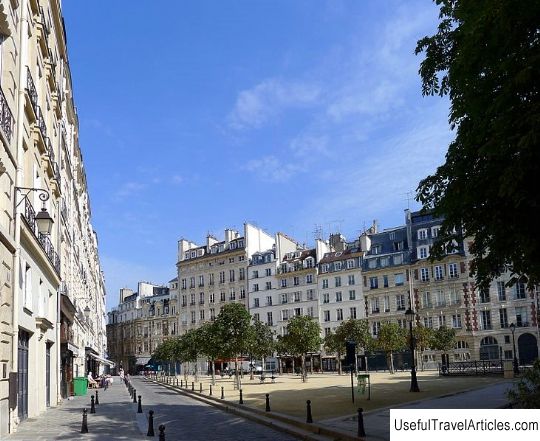Place des Vosges description and photos - France: Paris
Rating: 7,8/10 (653 votes) 
Place des Vosges description and photos - France: Paris. Detailed information about the attraction. Description, photographs and a map showing the nearest significant objects. The title in English is Place des Vosges. Photo and descriptionPlace des Vosges is the oldest of Parisian squares and, perhaps, the only one that has survived in its original form. But she is already 400 years old. At one time, the Tournelian Palace stood here, near which King Henry II was mortally wounded by a spear during a knightly tournament. The widow, Catherine de Medici, ordered the demolition of the palace. For some time it housed an equestrian market, but in 1605, King Henry IV began construction of the Royal Square. For Paris at that time, it was new: saving every meter of expensive land, the city got by with narrow crooked streets. The monarch, however, was imbued with the Renaissance ideas of urban planning, under him the appearance of Paris began to change for the better. However, the reformer did not live to see the completion of construction: he was stabbed to death by a religious fanatic. The only street Fran-bourgeois crosses the square, which has the shape of an almost regular square. Its perimeter is formed by buildings built in the same style. There are arches along the facade of each gallery, so that the square can be bypassed in any weather, hiding from the sun and rain. Louis XIII opened the Royal Square, celebrating his engagement to Anna of Austria. The event was celebrated in two buildings - the pavilions of the king and the queen, which stand out from a number of similar buildings with their high mansard roofs. Since then, the square has become one of the favorite places of festivities for the townspeople. Wealthy Parisians were eager to buy property here. One of the mansions belonged to Cardinal Richelieu. In due time, apartments were rented here by Victor Hugo, Alphonse Daudet, Theophile Gaultier. Napoleon Bonaparte renames the square, paying tribute to the residents of the Vosges department, who were the first to voluntarily pay the tax on the maintenance of the revolutionary army. Napoleon also ordered to restore the equestrian statue of Louis XIII, melted down by the order of Robespierre into a cannon, but in a marble version. In the 20th century, a cement copy of the statue was installed on the square, and the original was sent to the museum.       We also recommend reading Knysna Elephant Park description and photos - South Africa: Plettenberg Bay Topic: Place des Vosges description and photos - France: Paris. |




